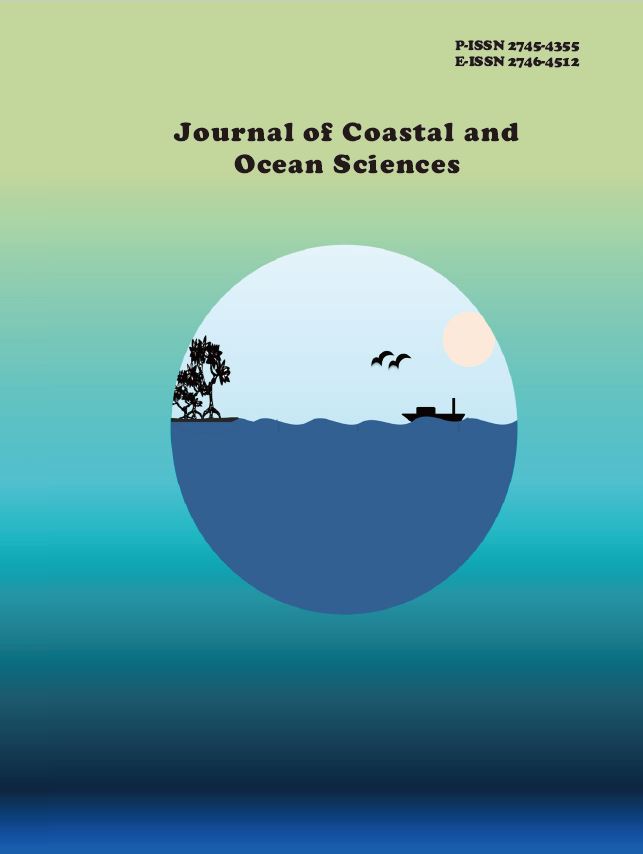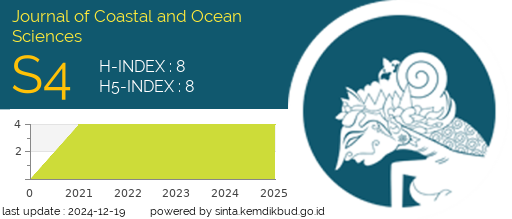The Structure of Mangrove Community in Sebauk Village, Bengkalis District, Bengkalis Regency, Riau Province
DOI:
https://doi.org/10.31258/Keywords:
Mangrove Community Structure Sebauk Village Bengkalis DistrictAbstract
The use of mangroves for economic purposes has long been carried out by the community, especially coastal communities without making significant improvements to the mangrove forest. This condition can provide significant pressure to the mangrove ecosystem of Sebauk Village. The purpose of this study is to analyze the community structure of the mangrove vegetation community in Sebauk Village. The method used in this study was the survey method. The result shows that the composition of the mangrove vegetation in Sebauk Village consisted of 3 Species, namely Rhizophora apiculata, Rhizophora mucronata, and Sonneratia alba. The highest inforten index value was Rhizophora apiculata with a percentage of 243.42% and the lowest value was Rhizophora mucronata namely 56.57%. Meanwhile, an informed index value of S. alba was 153.69%.
Downloads
References
Budi, D.W., dan E. Faiqoh. (2015). Analisis Vegetasi dan Struktur Komunitas Mangrove di Telu Benoa, Bali. Journal of Marine and Aquatic Sciences. 1 : 1-7.
Dwi, R. dan K. Jamil. (2021). Mangrove Damage Levels Jatimalang, Jatikontal, and Ngentak Villages, in Costal Purworejo Regency, Central Java. Jurnal Pengelolaan Perikanan Tropis (Journal of Tropical Fisheries Management) 5 (1). 11-19.
Faldin., A.I. Nur dan M. Ramli. (2016). Studi kualitas detritus pada jenis mangrove Rhizophora apiculata dan Sonneratia alba di Kelurahan Lalowaru, Kecamatan Moramo Utara, Kabupaten Konawe Selatan. Jurnal Manajemen Sumber Daya Perairan, 2(1): 51-61.
Marina, S. (2017). Struktur Vegetasi Mangrove dan Kelimpahan Kepiting Bakau (Scylla serata) di Kampung Nipah Desa Sei Nagalawan Kecamatan Perbaungan Serdang Bedagai Provinsi Sumatera Utara. Universitas Sumatera Utara, Medan.
Nontji, A.(1987). Laut Nusantara. Penerbit Djambatan. Jakarta.
Noor, Y. Khazali, M dan Suryadiputra.( 2006). Panduan Pengenalan Mangrove di Indonesia. Oxfam Novid, Bogor.
Reiny, S.S. (2012). Potensi Lactobacillus acidophilus ATCC 4796 Sebagai Biopreservatif pada Rebusan Daging Ikan Tongkol. J. IJAS. 2(2) : 604–613.
Setyati, W.A., E. Martani, T. Subagiyo dan M. Zainuddin. (2015). Kinetika Pertumbuhan dan Aktivitas Protease Isolat 36k dari Sedimen Ekosistem Mangrove, Karimunjawa, Jepara. Jurnal Ilmu Kelautan. 20 (3) : 163– 169.
Silitonga, L.R. (2019). Isolasi, Identifikasi dan Uji Sensitivitas Bakteri Amilolitik dari Sedimen Ekosistem Mangrove Stasiun Kelautan Purnama Dumai Terhadap Bakteri Patogen. Asian Journal of Aquatic Sciences. 2(3) : 257-266.
Supriadi., A. Romadhon, A. Farid. (2015). Struktur Komunitas Mangrove di Desa Martajasah Kabupaten Bengkalan. Jurnal Kelautan. 8(1) : 44-51.






